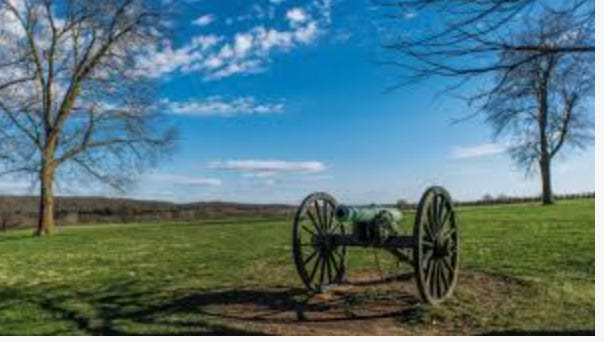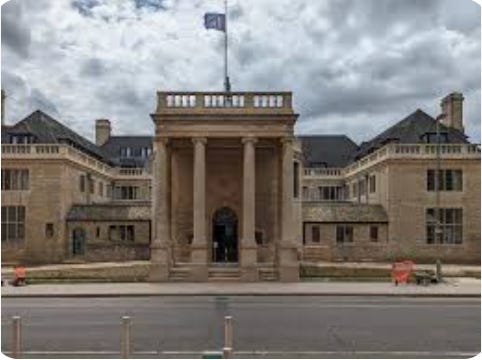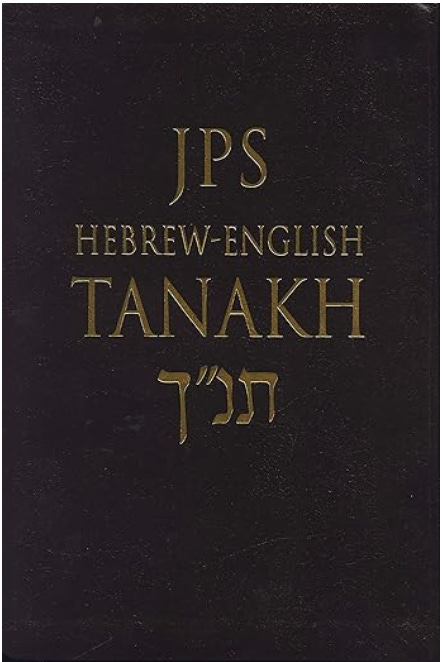“Things I Feared Most to Write, Part Three”

Some Scary Metaphysical Moments I Cannot Understand
I wrote a piece here called “Energies”, in which I began to address the meta-material “energies” that I believe surround us and flow through us. The bias of our post-Enlightenment Western hermeneutic, of course, is that these “energies,” whether beneficent or malevolent, do not in fact exist, and that we are crazy or fanatically deluded to speak of them, let alone to try to invoke the protection of the good ones and fear the influence of the negative ones.
That materialist bias can be good because it keeps us from leaping off into an ether of ungrounded imagination, or from cowering in the face of baseless superstition; but it is also bad because this materialist bias, and the silencing from public discourse of people’s actual (and common) experiences of metaphysical forces, leaves us extremely vulnerable to dark forces. And this leaves us vulnerable to dark forces at a time when what is underway, more fundamentally than anything else on the planet, is a battle between good and evil.
This battle is probably a battle for our very souls.
So much of what we see the perversions of pop culture, the abandonment by churches and synagogues of their missions, the division of families, the fetishization of abortion, the murder of elders in hospitals and the abandonment to hunger of citizens in North Carolina at this very moment, the worship of war in Washington DC — all of this surely is merely manifestations of this spiritual battle.
So I might as well just tell you. I now believe that metaphysical energies, good and evil, are real and surrounding us always and trying to affect us. Here are some experiences that led me to believe this more deeply and literally than ever.
I was always sensitive, as I have written before, to force fields such as those left in a building where violence or grief have taken place. I know plenty of people who have seen things they cannot explain materially — a pale figure flickering out of the corner of their eyes in a house they later learned was haunted, for instance.
Many years ago, a former partner of mine, when we stayed in a Civil War-era inn located at the edge of an old battlefield, was awakened all night by orbs of light. He thought at first that these were headlights of passing cars. I could not see them, thank God. But I watched him see them.

I’ve certainly heard footsteps I could not explain — this has happened to me three times. Once it happened in an old renovated shack in Massachusetts, where Brian, two young relatives of ours, and I, all stayed. The footsteps sounded like those of a man in heavy boots. They paced back and forth inside the little cabin all night long. At several points the footsteps sounded as if they had shifted onto the roof!
These footsteps were so scary and insistent that I ended up sleeping in the bathtub, as if that could help me. I was absolutely terrified.
In the morning, we all confirmed with one another that this had really happened; we all had individually heard these footsteps and for some reason we each had thought that none of the others present, could. There had also been a force field in the cabin when this was taking place, that felt to me rather paralyzing — as if it was pointless to try to do anything about what we were hearing, or to wake anyone else. I could not wait to just pack up and leave.
At another location, in an old hotel in Western Canada, years before that, I had heard male footsteps pacing back and forth all night about ten feet above me, in a room with a 12-foot ceiling. Again, I did not get the physics of what I was hearing. When I asked the hotel staff about it, they explained that a former guest, from the mid-20th century, checks in every day online at ten am, and that many guests hear his footsteps. Were the staff joking with me? Who knows; again, I was very happy to check out.
The last such instance took place when Brian and I were staying at Rhodes House. This is the beautiful home in Oxford University of the Rhodes Scholarship. It is an impressive stone building from 1926, built in memory of the founder of the scholarship, Cecil Rhodes.

Rhodes’ is of course a complex and in some ways very dark legacy. In addition to his having founded a scholarship that has done a great deal of good, Rhodes could be considered a mass murderer for his imperialist policies in Southern Africa:
“As the greatest individual symbol of British imperialism, Rhodes’s memorials clearly need no longer occupy prominent places, as these constitute a permanent assault on the descendants of his black victims. However, it is also critical that Rhodes’s monuments not be totally erased. […]
Rhodes was a white supremacist who committed crimes against humanity. He dispossessed black people of their ancestral lands in contemporary Zimbabwe and Zambia – Southern and Northern Rhodesia – through aggressive and duplicitous means, killing an estimated 60,000 people, and stealing 3.5 million square miles of Southern African real estate. Rhodes’s mercenaries embarked on a savage scorched-earth policy: pillaging and raping; summarily executing black prisoners of war, stealing farm land and thousands of herds of cattle, and burning kraals.”
Late one night, Brian and I — and another young relative who was with us, staying in a separate bedroom — all heard, on the second floor of Rhodes House, the high-heeled footsteps of a woman, pacing back and forth down the lengthy wood-floored hallway.
So there I was cowering in bed — yet again — trying to tell myself that this was all my imagination. I fear and dread encountering the supernatural, and just want it to go away and leave me alone.
But Brian, Irishman that he is, welcomes it. At the same moment that I was under the covers hoping that I was not hearing what I was hearing, Brian was pouring himself a drink in a guest kitchen on the bedroom level. He told me later that the high-heeled steps paused outside this kitchen door. Brian spoke aloud then, and invited whoever it was to stop trying to spook him, and to come on in for a drink.
After he said that, he told me the later, the sound of the steps just stopped.
The jovial Rhodes House porters the next day confirmed that others had also told tales of inexplicable activities on the second floor. Were they kidding with us? Who knows?
Thankfully, I have never previously, til recently, seen anything I can’t explain. I don’t want to!
But that all began to change when I started in 2024 to read the 1560 Geneva Bible aloud on video, and to compare it to the Hebrew Torah.
When I first felt moved to do this — to read both texts from beginning to end on video, and to analyze them and compare them with a typical modern English translation — I knew that this was an unusual and even Quixotic-seeming impulse. But something just pushed and pushed me to start achieving this task; even if no-one watched or followed these videos, it was something I felt I had to do.
I had never read the Hebrew Torah in anything like its entirety. I was on fire with excitement about having stumbled upon the 1560 Geneva Bible, with its extremely faithful translation into English from the Hebrew (rather than from the Latin) and its beautiful Shakespearean, pre-King James Bible wording. The 1560 Geneva Bible, as you know if you follow this project of mine, is the Founders’ Bible and the Puritans’ Bible. This is a translation that Protestant critics of Catholicism had risked their lives to create.
They had fled England, where Protestant reformers were being martyred, and formed an enclave in Geneva, where they worked at this dangerous, revolutionary task. They wanted every plow boy, as they put it, to be able to read and understand the Word of God, with no intermediaries. In the 1560 Geneva Bible, and in the original Hebrew, I have been astonished to learn (forgive me if you have heard me say this already, it is the eternal headline of this revelatory task) that God is a far different literary character than He is later mis-translated as being; in these two original texts, He is far more “like us”; far more present, loving, understandable, compassionate, kind and accepting of us, than later versions, from the KJV on, represent Him as being.
The mistranslations later consistently also privilege or elevate the role of Priest or intermediary in a way that is not present in the originals. In the 1560 Geneva Bible and the Hebrew Torah, as I started to learn the minute I began my reading, God makes it very clear that you don’t need anyone between Him and you if you wish to speak with Him. In addition, later translations are far more “theological”, and they tend to imply, inaccurately, that manmade “religion” itself is needed for one’s access to God, when in the original texts, this is just not true.
It was, I think, late January or early February of 2024; Brian had to travel to see family, and I elected to stay behind and get to work with these first readings. I chose to stay in a Bed and Breakfast run by a neighbor of ours, near our house in the woods, rather than risk being alone in our house in the event that there was a power outage, which often happens in our remote area during stormy winters. I had never stayed in that Bed and Breakfast before.
My neighbor showed me upstairs to my room for the weekend. Her Bed and Breakfast was a lovely and well-run two-story farmhouse from about 1820. It was mostly unchanged from its 19th century appearance. It still had its original wide wood plank floors; maroon-curtain-festooned high windows framed snowy drifts. A parlor and a dining room were downstairs. Classic polished dark wood banisters, curved beautifully at the bottom, led you to the second floor. Charming framed photographs of our rural area area in the late 19th century lined the walls, alongside traditional paintings of landscapes and florals.
Upstairs were four bedrooms, two small and two larger. Each one was furnished with modest, historically-appropriate furnishings in warm colors — russets and goldens and leafy greens. It all made for a comfortable set of choices.
I selected a small back bedroom with a tiny en-suite bathroom. Its high window looked onto the pretty snowdrifts of the garden. A soft, deep, old-fashioned double bed awaited, as did bookshelves filled with second-hand biographies and histories that are a treat to browse on lazy snowy weekends in the country.
It was the perfect writer’s retreat: quiet and private, with layers of history to add to the general air of inspiration. And there would be a hot breakfast in the morning, made not by me! I could not wait to get started on my reading project.
I had brought two gigantic tomes with me: The 1560 Geneva Bible itself, in hardcover, was one. My 1560 Geneva Bible is a wonderfully-produced, faithfully printed facsimile copy of the original Geneva Bible, complete with golden linen covers under the dust jacket, and with the original woodcut engravings and the original fantastically relatable, down-to-Earth and illuminating editorial comments in the margins.

The text of this Bible is all in Elizabethan print, which almost indecipherable to modern eyes if you have not been taught to read it. Strangely, I had had to learn to decipher this kind of text as part of my qualification tests for my Oxford MPhil studies in 1985. Of course, at the time, I had thought: “What a pointless exercise.” I had thought I would never need to decipher Elizabethan printing again in my life, just as I had thought I would never again need to use the Hebrew I had learned to read in Israel, as a child.
And yet — here I was, forty years later. Needing both.
The second huge tome on my bedside table was my Jewish Publication Society Tanahk — the Five Books of Moses in Hebrew.

I was daunted by the hugeness of the task I had set myself, but excited as well. The next day, I would begin — to read “Bereshit”: “In the Beginning”, in Hebrew and in the 1560 Geneva Bible English.
I readied myself for bed, and slid into clean, cool sheets under the warm coverlet. I felt safe, and eager for the morning. I read for a bit, waiting to be sleepy enough to turn off the light.
And then I looked up from my book, and turned to my right just a little and saw — words don’t really describe it. It was like a z-shaped squiggle, about two feet wide by a foot high, as if made in a single gesture from a Japanese calligraphy brush, but done with watered-down ink; smoky, almost translucent.
This smoky thing was about five feet from the ground, and about ten feet away from me, toward the corner of the room. Its darkness was a non-material darkness, like living smoke. It seemed alive, but not with a human or animal aliveness, and it certainly seemed most malevolent.
I wanted what I was witnessing to be a trick of the light or a misunderstanding of my own of what I was seeing, but this smoky shadowy presence stayed, moving slightly as smoke does, for some seconds, and it would not let me dismiss it as being a trick of the light or a misinterpretation of anything.
Again I closed my eyes, terrified once more but in a new and different way.
This was another thing altogether.
This was not a phenomenon like the weird sounds of steps that I (and others) had heard in the past. Those just seemed like scary human weirdnesses, like left-over human energy of some kind that no one could yet precisely explain or categorize, but clumsy or out of place, rather than spiritually elevated in a malevolent way, as this living smoke did.
This was other.
Eyes still closed, I started to pray.
But even as I did so, I was also aware that there was some weird logic to what I was experiencing. The smoke thing I was witnessing did not feel random to me. It felt clearly in the room that this manifestation, or this disruption to my vision or consciousness, or whatever it was, was related to the giant books awaiting me (and awaiting others through me) on my bedside table, and that the point of its appearing, was to seek to deter me from starting in on my project in the morning.
I slept somehow at last.
When I awoke and started to dress, I was shocked to see that there were some scratches on one side of my body — not on the side of my body that came in contact with the mattress. I could not understand what had caused them. They did not look like ordinary scratches. My skin was not disturbed, yet the scratches were angry and red. One almost looked like a claw mark, with three parallel lines. I took photos of them so I could figure it all out later. But even as I documented them, they faded away — abruptly, as ordinary scratches do not do.
I was mystified. I checked out early from the bed and breakfast, and went home.
Later I told a Jewish mentor, who advises me about my spiritual path, about what had happened that weekend. I was embarrassed and confused and very scared.
He told me (as others from other religious traditions would confirm later) that these both were classic, indeed recognizable, signs of spiritual attack; and that in his opinion this was likely to have been caused by my intention of reading the Torah and the accurately translated English Bible, cover to cover in public. He very kindly sent me two beautiful mezuzahs, the paper scrolls encased in clear cases, both blessed by a highly revered Rabbi: one was for me to keep in my purse at all times, and one was for us to post on the lintel of our home.
This is a Mezuzah:

From where does the practice come, of putting mezuzot (the plural) on our doorposts, to consecrate our homes?
The direction that we do so comes from Deuteronomy 6:9: “And you shall inscribe them on the doorposts (mezuzot) of our house and on your gates” (Deuteronomy 6:9, 11:20).
“The Mezuzah scroll contains two paragraphs from the Torah. (Deuteronomy 6:4-9 and 11:13-21).
“Hear, O Israel: The Lord our G-d, the Lord is one. Love the the Lord your G-d with all your heart and with all your soul and with all your strength. These commandments that I give you today are to be upon your hearts. Impress them on your children. Talk about them when you sit at home and when you walk along the road, when you lie down and when you get up. Tie them as symbols on your hands and bind them on your foreheads. Write them on the doorframes of your houses and on your gates.”
“So if you faithfully obey the commands I am giving you today -to love the Lord your G-d and to serve him with all your heart and with all your soul – then I will send rain on your land in its season, both autumn and spring rains, so that you may gather in your grain, new wine and oil. I will provide grass in your fields for your cattle, and you will eat and be satisfied. Beware lest you be enticed to turn away and worship other gods and bow down to them. Then the Lord’s anger will burn against you, and he will shut the heavens so that it will not rain and the ground will yield no produce, and you will soon perish from the good land the Lord is giving you. Fix these words of mine in your hearts and minds; tie them as symbols on your hands and bind them on your foreheads. Teach them to your children, talking about them when you sit at home and when you walk along the road, when you lie down and when you get up. Write them on the doorposts of your houses and on your gates, so that your days and the days of your children may be many in the land that the Lord swore to give your forefathers, as many as the days that the heavens are above the earth.”‘
The mezuzah is supposed to offer protection to those in the home, and to remind us as we enter and exit, that a Jewish home, where commandments are being observed, is meant to be a sacred place.
Of course, one could say this about any home where service to God is being prioritized. So maybe this kind of practice, common to all traditional cultures, is all not simply a barbaric superstition.
Maybe such talismans and even more significantly, such prayers and holy texts, really do protect us.
Of course, I did not call off the project I had planned. I launched in and started reading, that very week. We are now at the end of Exodus, and my life will never be the same. Others who follow the readings say the same thing. It’s a blessed and blessing journey, and it is a privilege to be on it together.
But I certainly was scared half to death, to begin.
Why am I describing these eerie moments to you — these true things that really happened but that are so unheimlich, so unnerving? It is vulgar and off-putting to have experiences such as this. It is tempting never to disclose them.
Why am I risking the vituperation and the mockery that accompanies such disclosures?
Well, just as I felt pushed to start reading the 1650 Geneva Bible and the Torah in Hebrew on video, chapter by chapter — so I also feel pushed, with an impulse that feels to me to be related to that task, to tell these stories that I scarcely fathom myself to this day, and to try to put them in context.
What do these moments suggest?
What if this is not all there is? What if the life of the dead is real? What if the afterlife is very real?
What if some souls or echoes of souls really are trapped in this dimension as they try to make their way to Heaven? What if a journey really does await us, after we who are materialists think that our journey will be over?
What if we are indeed buffeted every day of our lives, whether we understand it or not, by forces seeking either to bless us and nurture us and protect us from harm, or by forces seeking to intimidate us and distract us, or tempt us, to keep us from sheltering in God’s Word and settling into God’s arms?
What if blessings and curses are real? What if both angelic and demonic energies are real?
What if they care about us, and our choices, in both positive or negative ways?
What if our lives and choices indeed really matter?
Not just for now, but forever?
If so — would you not see the world very differently than you might?
Would you not seek a blessing, for yourselves and your families?
Would you not open God’s word at night, and read it in the morning; would you not elect even to wear God’s symbol around your neck, however you see that symbol; or baptise your child if that is your path; or affix God’s word to your door?
__________
Follow ‘Outspoken’ on Rumble! https://rumble.com/c/DrNaomiWolfOutspoken
Please Support Our Sponsors:
Birch Gold Group: “A Gold IRA from Birch Gold Group is the ultimate inflation hedge for your savings in uncertain times. To see how to protect your IRA or 401(k), get your FREE info kit on gold by texting the word DAILYCLOUT to 989898.”
The Wellness Company: https://dailyclouthealth.com
Use code OUTSPOKEN for 10% off!
NativePath: “Collagen supplements help you replace what you stop producing — and the studies speak for themselves. Visit https://getnativepath.com/dailyclout for a MASSIVE 45% discount plus free shipping!”
BiOptimizers: “Over 75% of the population is magnesium deficient. Nurture your mind and body with this all-natural, full-spectrum magnesium supplement. Go to https://bioptimizers.com/dailyclout and use promo code DAILYCLOUT for 10% off!”
Patriot Mobile: “Visit https://patriotmobile.com/dailyclout for a FREE month of service when you switch!”
Order ‘The Pfizer Papers’ and Support Our Historic Work: https://www.amazon.com/dp/1648210376?&tag=skyhorsepub-20
Discover LegiSector! Stay up-to-date on issues you care about with LegiSector’s state-of-the-art summarizing capabilities and customizable portals. No researchers needed, no lobbyists, no spin. Legislation at your fingertips! Learn more at https://www.legisector.com/
Subscribe to DailyClout so you never miss an update!

One of our country’s most important freedoms is that of free speech.
Agree with this essay? Disagree? Join the debate by writing to DailyClout HERE.



